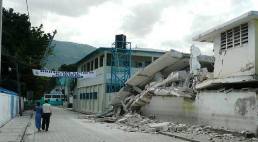
| Education System in Haiti |
The school system in Haiti remains in shambles after the 2010 earthquake damaged or destroyed the majority of schools. Literacy rates hover around 55% for both sexes and most of the 15,200 primary schools are community run or funded by religious institutions. As a result, the self-imposed prophecy imposed by the country’s 3% wealthy is alive and well. The official medium of education is Creole. Although introduced as a measure to enhance national identity, it has the unfortunate effect of trapping the children of the poor in a vicious cycle of ongoing poverty. The enrollment rate hovers around 30%.
The children of the wealthy go on to university locally or abroad while peasants continue with their endless rote of tilling land. Those who wish to improve themselves through vocational training in the cities face travelling and residential expenses beyond their family’s dreams. International aid organizations are trying to arrest this reality in conjunction with Haitian authorities, by taking vocational training to the hinterland. But, with so few jobs outside of subsistence farming, how much hope is there really, for the youth of marginalized Haiti?
 Although the constitution guarantees free education for all, the Haitian reality is that the wealthy go to university with few exceptions. Moreover, those that do still encounter the material aftershocks of an earthquake that literally smashed their country.
Although the constitution guarantees free education for all, the Haitian reality is that the wealthy go to university with few exceptions. Moreover, those that do still encounter the material aftershocks of an earthquake that literally smashed their country.
Equally sadly, an estimated 85% of college-educated citizens choose to live abroad in search of a better life. There are 13 universities in Haiti of which more than half have religious affiliations.